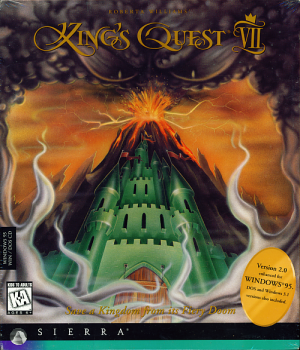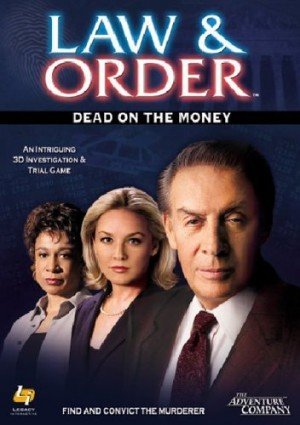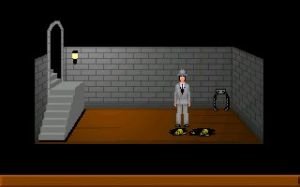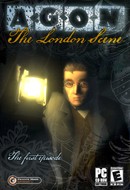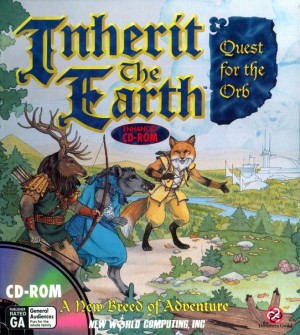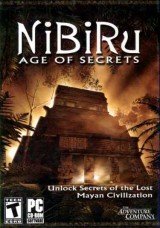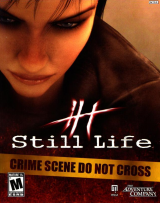Review for Space Quest I: The Sarien Encounter
In the early 1980s, Sierra On-Line was already a premiere source for graphic adventures, and specialized in fantasy games like Wizard and the Princess, The Black Cauldron, Mystery House, and King’s Quest I. When programmers Scott Murphy and Mark Crowe pitched their boss, Ken Williams, on a new sci-fi comedy game, Williams was skeptical and turned them down on the spot. Not willing to give up so easily, Murphy and Crowe created a short demo of their idea, which Williams actually loved, and they ended up using it as the first four rooms of what went on to become Space Quest: The Sarien Encounter.
First released in 1986, Space Quest I originally utilized the EGA graphics and text parser common to adventures of the time. During Sierra’s re-release craze of the early 90s, SQ1 received a graphics upgrade to VGA, and the text parser was replaced with point-and-click action icons. If you want to play the original, you’ll need to hit up the auction sites, but the VGA remake was included in the 2006 Space Quest Collection.
As the story begins, the Starship Arcada is under attack. The evil Sariens have boarded and are killing off the crew, one by one. The all-powerful Star Generator has been stolen, the self-destruct sequence has been initiated, and all appears lost. But wait! There, asleep in the broom closet, is our hero, Roger Wilco… the janitor? He steps out from his afternoon slumber to find his co-workers dead and strewn about the floor. Using only his wits – what he has of them anyway – Roger makes it to an escape pod seconds before the Arcada explodes. With the might of the Star Generator on their side, the Sariens are now capable of destroying entire planets. Roger’s pod crash lands on the desert planet of Kerona, and from there he has to overcome traps, battle monsters, and find a way back to the Sarien mothership before his home planet of Xenon is blown to pieces.
Over the course of the series, Roger Wilco became one of the most beloved characters in adventure games, but in this first outing, he doesn’t have much of a personality. All we know of Roger is told to us by the game itself, and we’re assured time after time that he’s barely capable of tying his shoes, much less saving the universe. While Roger himself has virtually no dialogue in the game, the other characters can be pretty talkative. The tent city of Ulence Flats is populated with a slimy used rocket salesman, a morose robot warehouse worker, and a space-pimp (or is he just a snappy dresser?) with an eye for collectables.
Roger is controlled via a point-and-click interface, with the action icons hidden all along the top of the screen. Your interactions are limited to Walk, Look, Use/Take, Talk, Smell, Taste, and Use Inventory Item. Smell and Taste aren’t actually used for any practical purposes aside from jokes, which feels like a missed opportunity for more innovative puzzles. The EGA version uses a text parser of the oldest kind, where the game doesn’t even pause when you start to type something. Due to the timing of some sequences, you’ll need to begin typing before you even enter the room to avoid disaster. Obviously this is the best they could do at the time, but it can be frustrating for a modern player to be killed because of a typo. Furthermore, the game’s internal thesaurus could use some updating. I spent too long trying to find the right word for a crate before I discovered it could only be a “trunk.”
There’s nothing inside that “trunk” to collect for your inventory, but get in the habit of checking everything anyway. Virtually all the puzzles in SQ1 are inventory-based, and the game has no problem allowing you to forever leave one area without an item you’ll need in the next. If you’re an experienced adventure game player, you already have a “pick up everything that’s not nailed down” attitude, and with that you’re likely to avoid missing anything vital. The VGA graphics make all the items clearly visible, and while hotspots aren’t highlighted, giving every screen a vigorous clicking-over isn’t difficult and yields lots of good jokes. Two dead ends in the game felt a little unfair, as there’s no logical reason you’d need to act the way you do in order to proceed, but with the way they’re constructed you could easily get through them quite by accident and never realize your narrow escape. There are two copy protection puzzles, but the 2006 Space Quest Collection comes with a PDF of the manual, so as long as you print those pages or keep it open in another window, you’re okay. There are also two bits of info you need to write down to use later, so have a notepad handy.
The EGA version’s puzzles are almost identical, and indeed the underlying structure of the game is beat-for-beat, with only a few key differences. For example, there is no copy protection in the EGA version, and the “two bits of info you need to write down” aren’t randomly generated, so if you miss them, a walkthrough will suffice. A bigger issue is the increased likelihood of missing inventory items. Given the limited graphics, many things that are so easy to find in the remake are literally invisible in the original, and can only be located by looking at the room and noting the details you’re given in the text. At some point in SQ1, Roger must play a slot machine. In the VGA version, the slot machine only looks like a minigame, and it’s actually a puzzle to be solved and moved past. In the EGA version, however, it’s every bit a minigame, and a rather tedious one at that. The conceit of the slot machine is that it has very good odds, but once in a while it just up and kills you, so Save/Restore tactics, while normally discouraged by Sierra minigames, are literally the only way to proceed in this case.
While the VGA version may take it easier on you with the slot machine, there will be plenty of other opportunities to restore your game throughout. Deaths are constant and varied, and even the innocent act of wondering what’s in a crevice could end up with Roger’s gruesome demise. The entire first section of the game is a timed sequence, with a helpful 15:00 counter in the corner of the screen letting you know exactly when the Arcada is going to self-destruct with all hands onboard. While you’re rushing about trying to find a way to avoid becoming one with the universe, if at any time you’re told “You hear footsteps” you’ll need a place to hide, and quickly, or a Sarien blaster will cut right through you. In the original, there’s no visible timer telling you the Arcada’s going to self-destruct—it just happens.
By 1991, Sierra must have learned how irritated some adventure gamers get by an arcade sequence, because the VGA version asks you straight up after you acquire your sand-skimmer vehicle if you want to steer it yourself or just skip to the end. If you choose to proceed, you’ll have to pilot the skimmer along the bottom of the screen, avoiding the rocks coming towards you (or, actually, you’re going towards them, but no matter). Small rocks damage you (you’ve got 5 HP total), and large rocks knock you off completely. If you have infinite patience and terrible reflexes, you can turn down the speed in the Options menu, but your skimmer will be slower as well, so you still need to get a good head start to avoid a rock. In the EGA version, you can’t skip the skimmer game, and it’s almost impossible on anything but the slowest speed.
Every scene in the VGA version is nicely detailed and pleasing to the eye (especially if that eye first discovered adventure games in the VGA period of the early 90s like mine did). Backgrounds, particularly aboard spaceships, are full of interesting details. One room on the Arcada is decorated with a giant mouse and joystick, while the Droids ‘B Us tent in Ulence Flats is selling a disassembled Ultron (from Marvel Comics) among other famous ‘bots. The music is pleasant (if forgettable), and there’s a sweet ding! sound whenever you do something right and are awarded points. The EGA version’s graphics are understandably poor, technically speaking, but they’re not artistically proficient either. Whereas the remake has a giant monster skeleton for Roger to explore, in the original it’s just regular ol’ cliffs. There’s also very little music, as sound cards weren’t even available in 1986, though there are some PC speaker beeps and boops.
The Space Quest series is best known for its humor, and while SQ1 is not necessarily a joke-a-minute laugh riot, the overall tone of the game is light and whimsical. This is especially true when it comes to the deaths. Every classic Sierra adventure contains a seemingly infinite number of ways to kill yourself, and SQ1 is no exception, but the designers felt that if you had to die, it should be part of the fun, not a detractor from it. One particularly funny VGA death brings up the programmers themselves (in their alter egos: the Two Guys From Andromeda) to comment over an instant replay and explain exactly where you went wrong. The EGA version, while still humorous, is significantly blander than the remake. While much of the script is word-for-word the same, a lot of it was clearly punched up later, especially the environment descriptions and the deaths.
While I doubt a generation of youngsters went into janitorial service after playing this game, it’s easy to see why the franchise took off and became one of Sierra’s biggest hits. An experienced adventure gamer will breeze through Space Quest I in about 3-4 hours, adding maybe an hour or two for the EGA version, since it’s so much harder to see what you’re trying to do. From a (relatively) objective standpoint, SQ1 is too easy, too short, and the story and characters are barely fleshed out at all, but it contains enough charm and fun to make those flaws easy to brush aside. Through sheer force of personality, the game draws you into its spell and compels you to keep going, even after your head’s been dissolved or you’ve been crumpled up into a basketball and dribbled. So pick up that mop, cadet, it’s time to clean up the universe.











